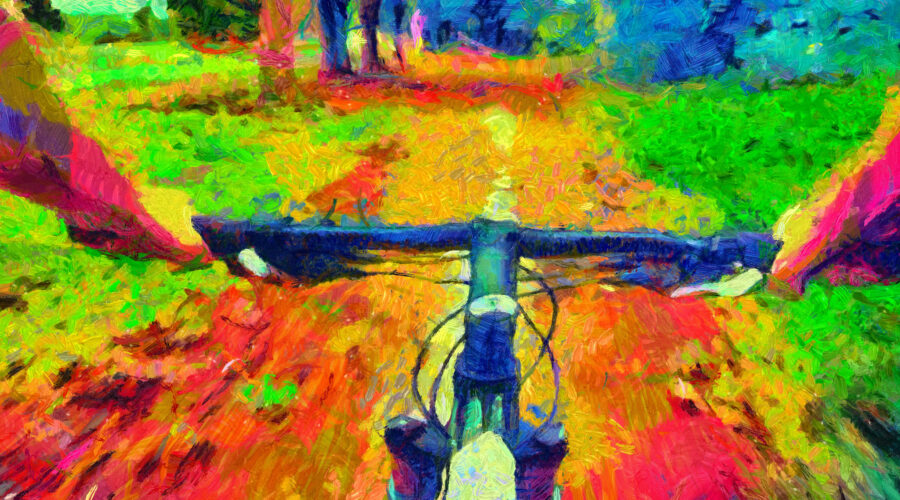What Is Bicycle Day – The World’s Biggest Psychedelic Holiday?
Bicycle Day is an annual “holiday” on April 19 that psychedelic enthusiasts celebrate. However, Bicycle Day is more than just that, as it represents a major event in psychedelic history.
April 19 is the day that the effects of LSD (lysergic acid diethylamide) were discovered by Swiss chemist Albert Hofmann. It was on that date in 1943 that Hofmann experienced LSD for the first time in human history. After taking the psychedelic, he went for a bike ride, testing the drug’s effects on himself.
Unfortunately, Hofmann’s experience that afternoon was not as pleasant as some might imagine. But this did not prevent the scientist from continuing his research into LSD’s therapeutic properties.
In the decades to follow, Hoffman’s research remains influential on culture, politics and science.
Here’s a Timeline of Albert Hoffman’s Famed Bicycle Day
April 19th, 4:20 PM: Hofmann ingests 250 micrograms of LSD in his laboratory at Sandoz. He chooses this dose, mistakenly believing it to be the minimum required to achieve an effect, not realizing it’s significantly more potent than necessary.
4:50 PM: About 30 minutes after ingestion, Hofmann starts to feel the effects of LSD. He experiences anxiety, visual distortions, symptoms of paralysis, and a sensation of being intoxicated.
5:00 PM: The effects intensify rapidly. Hofmann asks his laboratory assistant to accompany him home, as he feels overwhelmed and unable to continue working. Due to wartime restrictions and the absence of cars, they decide to use bicycles.
During the bicycle ride home: Hofmann’s condition deteriorates further. The journey home is chaotic and challenging due to his altered state of consciousness. He experiences severe anxiety and hallucinations, which he later described as being both terrifying and exhilarating.
After arriving home: Hofmann’s state of distress continues to escalate. He fears he has poisoned himself with the LSD. The symptoms include extreme hallucinations, a distorted sense of space and time, and a feeling of dissociation from his body.
Late afternoon and evening: At home, Hofmann’s doctor is called, but no physical abnormalities are found aside from dilated pupils. Hofmann is put to bed and, despite his ongoing turmoil, eventually begins to enjoy the visual and auditory distortions, describing them as kaleidoscopic and intensely colorful.
The following hours: Hofmann drifts in and out of a state where he is unable to distinguish between reality and his hallucinations. The experience becomes less frightening and more intriguing and enjoyable as time passes.
The next morning (April 20): Hofmann awakens feeling refreshed and with a sense of well-being. The residual effects of the LSD provide him with a new perspective on life and nature, which he describes as a reinvigorated sense of understanding and appreciation.
What Is Bicycle Day? Explaining How It Began
So, what is Bicycle Day? Arguably, the world’s biggest psychedelic holiday, a professor from Northern Illinois University, Thomas Roberts, began celebrating it in 1985. It takes its name from the legendary experiment of 1943, in which Albert Hoffmann took a bike ride after ingesting a large dose of LSD and discovering its hallucinogenic effects.
Since then, Bicycle Day has spread around the world, becoming a celebration recognizing a pivotal point in the history of psychedelic experimentation. Indeed, a new era in chemistry, medicine, culture, arts and philosophy started after that day in which Hofmann made a guinea pig of himself for his own research.
Bicycle Day represents the opening of a doorway to a richer understanding of human consciousness. In the words of Hofmann, LSD is to be a sacred tool that can help its users attain “a deeper, comprehensive reality.”
This potential rapidly drew attention to psychiatrists and neurophysiologists. In fact, throughout the 1950s and 1960s, many researchers in those fields studied the use of LSD to treat schizophrenia, alcoholism, anxiety, depression and other mental health issues.
Many of these trials, unfortunately, were abandoned because of federal prohibitions led by the infamous War on Drugs in the 1960s and 1970s.
Another impact on psychedelic experimentations with LSD? The hippie movement and the cultural revolution of the 1960s. Many artists, musicians, intellectuals and bohemians in those days took LSD for creative use, which greatly impacted the course of cultural history.
However, Hofmann didn’t imagine the impact of his discovery when he started studying LSD in the late 1930s.
Who Is Albert Hofmann?
Albert Hofmann was the first person to synthesize, ingest and study LSD. His research started in 1938, in the pharmaceutical department of Sandoz Laboratories in Basel, Switzerland, while he was studying ergot, a fungus that usually grows on rye, from which he synthesized LSD as a potential stimulant for treating circulatory and respiratory diseases.
At first, he tested the new substance on sedated animals, but he didn’t find interesting results in those experiments. That’s the reason why his research was shelved until five years after, when he decided to continue studying LSD.
On April 16, 1943, Hofmann synthesized a new batch of what we know as “acid” — or “the wonder drug LSD.” While working on that process, he started feeling strange. He decided to interrupt his job and go back home.
Upon arrival, as he points in his memoir LSD – My Problem Child, he “sank into a not unpleasant intoxicated-like condition, characterized by an extremely stimulated imagination.” Therefore, he thought that an accidental contact with the substance might have caused the weird experience. He decided to take a dose to experiment on himself.
Riding A Bike On A Bad Trip
On April 19, he voluntarily took 250 micrograms of LSD — which is a strong dose. By comparison, the Global Drug Survey recommends between 100 and 200 micrograms. Hoffman then realized that “altered perceptions were of the same type as before, only much more intense.”
After suffering speech difficulties, he believed he had poisoned himself, asking his assistant to help him get home.
Due to restrictions of Second World War times prohibiting the use of cars, they took a bicycle ride to Hofmann’s house. While pedaling, the impact of the LSD hit Hofmann’s system. The trip became a nightmare. Per his memoir, Hoffman said it felt as if a demon “had taken possession of my body, mind and soul.”
At home, he was able to relax and fall asleep. The morning after, he woke up feeling himself to be “in excellent physical and mental conditions.”
A “sensation of well-being and renewed life” flowed through him. From his own experience, Hoffman claims that research on LSD would be valuable to pharmacology and medicine. And from his infamous bike ride, Bicycle Day was born.
Thus, he continued his experiments on acid. This set the stage for the psychedelic revolution that would take place more than a decade later.



